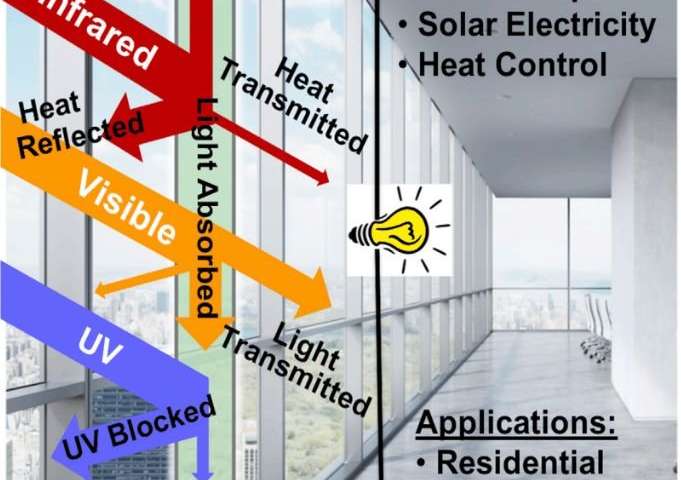
Credit: Cell Press
A new dual threat window could double the energy efficiency of average households.
Researchers from the South China University of Technology have developed a window that blocks unneeded parts of sunlight to keep heating and cooling costs low, while also serving as a miniature electricity generator.
“Building-integrated photovoltaics are a great example of a market where silicon photovoltaics, despite their cheapness and performance, are not the most appropriate due to their dull appearance and heaviness,” Hin-Lap Yip, senior author and professor of materials science and engineering at the South China University of Technology, said. “Instead, we can make organic photovoltaics into semi-transparent, lightweight and colorful films that are perfect for turning windows into electricity generators and heat insulators.”
The researchers performed a three-way balancing act between harvesting light for electricity generation, blocking it for heat insulation and transmitting it as a window normally would to construct a prototype capable of simultaneously outputting electricity and preventing excessive heating.
By mixing and matching different materials and chemical compounds previously used for the different window functions, the researchers were able to create a device that let familiar visible portions of sunlight through, while turning back the infrared light and converting the near-infrared region in-between into an electric current.
Back-of-the-envelope calculations suggest that, in theory, installing windows outfitted with dual electricity-generating and heat-insulating properties could cut an average household’s reliance on external electric sources by over 50 percent.
While it is estimated that every square inch of every window would be paneled with multifunctional solar cells, the new windows only require a slight uptick in power-conversion performance from the 6.5 percent figure realized by the researchers.
“For this demonstration, we are not even using the best organic photovoltaics that are out there in this field,” Yip said. “Their efficiency is improving rapidly, and we expect to be able to continuously improve the performance of this unified solar-cell window film.”
Along with new energy efficient window, the researchers believe the dual-functioning materials could be used various emerging technologies.
“Making heat-insulating multifunctional semitransparent polymer solar cells is just the beginning of exploring new applications of organic photovoltaics,” Yip said. “A version tailored for self-powered greenhouses is only one of many impactful products that we want to develop for the future.”
The study was published in Joule.




